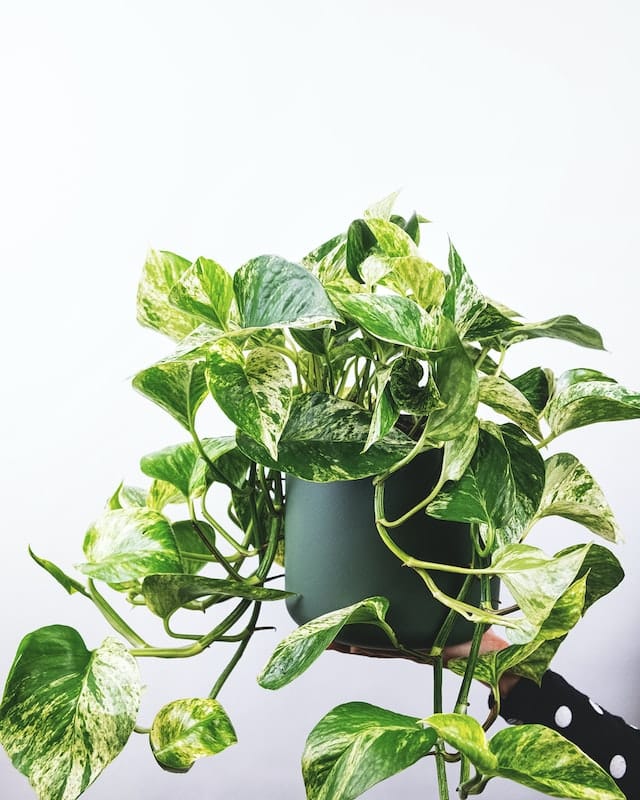Marble Queen Pothos
Marble Queen Pothos, also known as Epipremnum Aureum ‘Marble Queen,’ is a stunning plant that is loved for its variegated leaves. The Marble Queen Pothos is a trailing plant with heart-shaped leaves that are marbled with white, green, and yellow. This plant is perfect for beginner plant owners because it is low-maintenance and easy to care for. Not only that, but propagating the Marble Queen Pothos is also quite simple, making it an excellent choice for beginners looking to expand their plant collection.
Marble Queen Pothos: A Brief Overview
Marble Queen Pothos is a popular plant that is native to the Solomon Islands. It belongs to the Araceae family and is a close relative of the Philodendron. The Marble Queen Pothos is an evergreen plant, which means it retains its leaves throughout the year.
This plant is known for its stunning variegation, which makes it a popular choice for indoor decor. The Marble Queen Pothos is a trailing plant that can grow up to 10 feet long, making it a great option for hanging baskets or training along a trellis.
Propagation: A Step-by-Step Guide
Propagating Marble Queen Pothos is a simple process that can be done in a few easy steps. Here’s how:
Step 1:
Choose the Right Stem:
To propagate Marble Queen Pothos, you will need to select a stem from the mother plant that is at least 4-6 inches long. Look for a stem that has at least two to three leaves, as this will give you a better chance of success.
Step 2:
Prepare the Stem:
Once you have selected your stem, use a pair of sharp, clean scissors to make a clean cut just below a node. A node is where a leaf or a branch grows from the stem. The cut should be at a 45-degree angle to increase the surface area for rooting.
Step 3:
Remove the Leaves:
Once you have made the cut, remove the bottom leaves from the stem, leaving two to three leaves at the top. This will help the plant focus its energy on growing new roots rather than supporting a lot of foliage.
Step 4:
Rooting Hormone
In rooting hormone deep the cut end of the stem. Rooting hormone is a powder or liquid that contains plant hormones that stimulate root growth. This step is optional, but it can increase the chances of success.
Step 5:
Potting Mix:
Fill a small pot with a well-draining potting mix. You can use a mix of peat moss and perlite, or you can use a commercial potting mix. Make a hole in the potting mix with your finger or a pencil, and insert the stem into the hole.
Step 6:
Watering:
Water the potting mix until it is moist, but not waterlogged. Then, cover the pot with a clear plastic bag or a plastic wrap to create a humid environment for the cutting. This will help prevent the cutting from drying out.
Step 7:
Place in a Warm, Bright Location:
Place the pot in a warm, bright location, but away from direct sunlight. Direct sunlight can be too harsh for the cutting, so it’s best to place it in a spot that receives indirect sunlight.
Step 8:
Monitor and Care for the Cutting:
Check the cutting regularly and make sure the potting mix remains moist. You can mist the cutting with water to increase humidity. After a few weeks, you should start to see new growth and roots forming.
Step 9:
Wait for the Roots to Grow:
After a few weeks, you should see roots starting to form from the nodes on the stem. Once the roots are at least 1-2 inches long, you can transplant the new Marble Queen Pothos plant into a pot filled with well-draining soil.
Step 10:
Well -lit Area:
Water and care for the new plant. Water the newly transplanted plant and keep it in a well-lit area, but not in direct sunlight. Over time, the plant will grow and develop into a healthy Marble Queen Pothos.
Read about : Solution of yellow Pothos Leaves
Conclusion:
In conclusion, propagating Marble Queen Pothos is an easy and rewarding process that can allow you to create new plants from a healthy parent plant. With a little bit of patience and care, you can enjoy the beauty of this stunning houseplant in multiple locations throughout your home.

